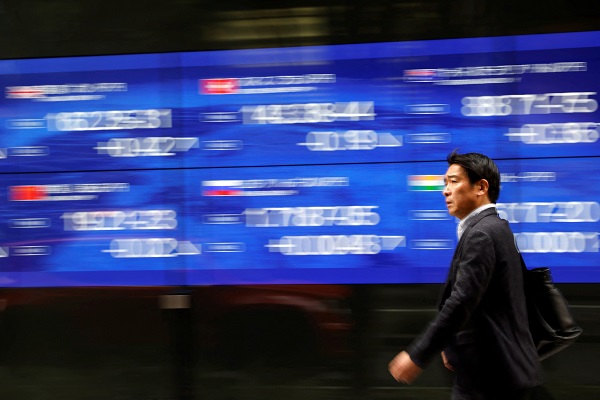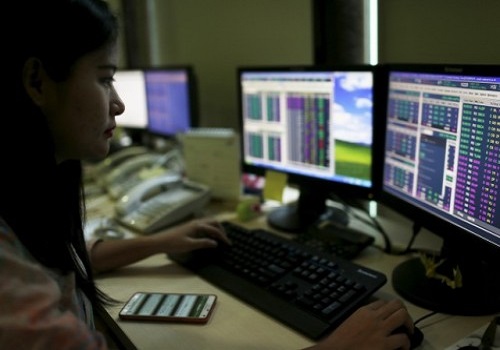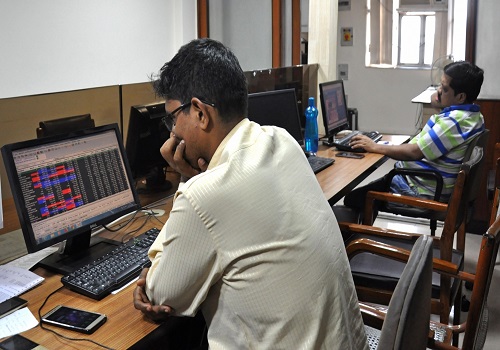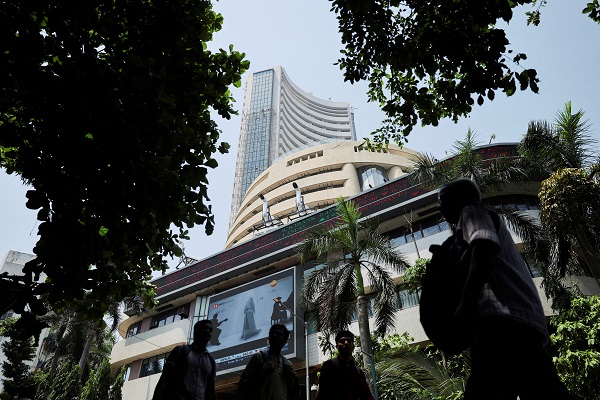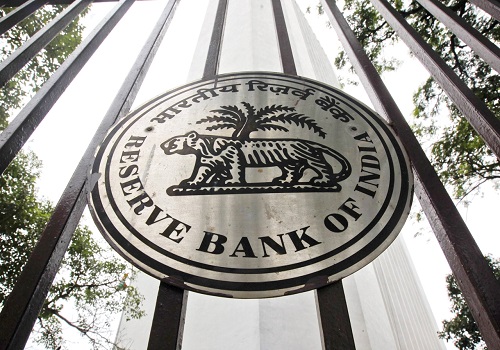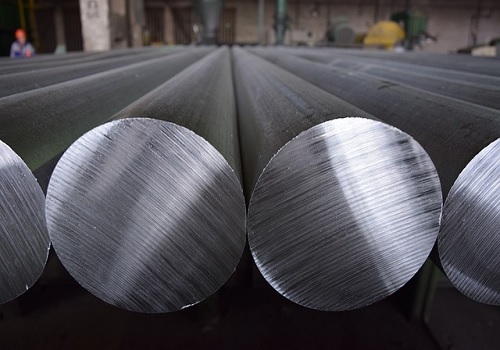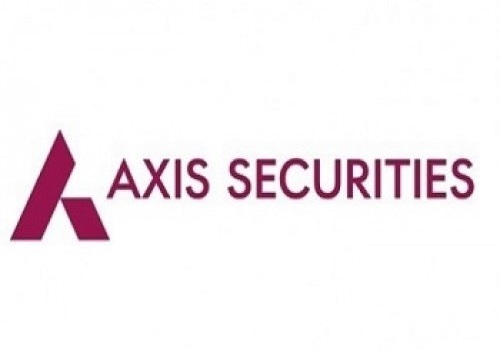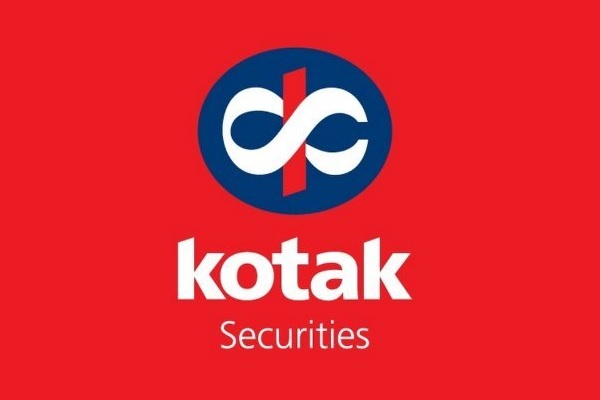Silver trading range for the day is 70750-71800 - Kedia Advisory

Gold
Gold exhibited a positive trend, settling up by 0.26% at 62167, driven in part by China's decision to lower key interest rates for mortgages, aiming to rejuvenate its struggling housing sector. This move is anticipated to enhance metal demand globally, particularly benefiting gold as a safe-haven asset. The surge in physical gold premiums in India, reaching more than four-month highs, reflects increased demand as jewellers stock up for the upcoming wedding season. Despite subdued activity in other trading hubs due to the Lunar New Year holidays, Indian dealers raised premiums to $3.5 an ounce over official domestic prices, a notable increase from the previous week's premium of up to $2. Jewellers have responded by placing orders, aligning with growing customer interest ahead of the wedding season. Somasundaram P.R. from the World Gold Council predicts a rise in India's gold demand from the annual range of 700-800 tonnes since 2019 to 800-900 tonnes in 2024, fueled by robust economic growth and higher incomes. However, the pickup in gold purchases is expected to gain momentum in the second half of the year. From a technical standpoint, the market is currently under fresh buying, evidenced by a 1.05% increase in open interest to 13456, accompanied by a 163 rupee uptick in prices. Support for gold is identified at 61980, with a potential test of 61790 if breached. On the upside, resistance is anticipated at 62310, and a breakthrough could propel prices to test 62450.
Trading Ideas:
* Gold trading range for the day is 61790-62450.
* Gold gains getting a lift due in part to China dropping key interest rates for mortgages.
* Physical gold premiums in India rose to more than four-month highs as demand picked up.
* The demand for gold in India, is expected to increase to 800-900 tonnes in the calendar year 2024
Silver
Silver faced a slight dip, settling down by -0.07% at 71255, as investors eagerly awaited the minutes of the recent U.S. Federal Reserve policy meeting to assess potential interest rate cuts. The market sentiment is influenced by warmer U.S. inflation reports, leading to speculations that the Fed might delay rate cuts until the latter half of the year, or possibly later. The ongoing attacks by Houthi rebels on ships in the Red Sea add a geopolitical element to the market. Meanwhile, Bank of England Governor Andrew Bailey expressed comfort with investors anticipating interest rate cuts in the UK this year. Despite the economy showing signs of recovery after a recession in late 2023, investors are increasing bets on a first rate cut in June. The BoE had raised the Bank Rate to 5.25% in August 2023, its highest since 2008, to combat surging inflation and has maintained it despite a slowdown in price growth, emphasizing lingering inflation risks. Technically, the silver market is undergoing fresh selling, evident from a 1.57% increase in open interest to 21910, coupled with a decline of -51 rupees in prices. Support for silver is identified at 71000, with a potential test of 70750 if breached. On the upside, resistance is expected at 71525, and a breakthrough could lead to a test of 71800. Traders should monitor these levels closely for potential trading strategies, considering the evolving dynamics in both global economic factors and technical indicators in the silver market.
Trading Ideas:
* Silver trading range for the day is 70750-71800.
* Silver settled flat with investors keenly awaiting Fed’s minutes.
* In news, reports said Houthi rebels continue to attack ships traversing the Red Sea.
* Recent warmer U.S. inflation reports have the marketplace thinking the Fed will hold off on lower interest rates.
Crude oil
Crude oil faced a decline, settling down by -1.35% at 6430, driven by persistent concerns about global demand. Despite geopolitical tensions in the Middle East, particularly the ongoing conflict, demand uncertainties took precedence and tempered the impact of supply-side concerns. The International Energy Agency's report highlighting demand worries contributed to a subdued market sentiment. The American Petroleum Institute's Weekly Statistical Bulletin revealed a significant increase in crude oil inventories by 8.52 million barrels in the week ending February 9, surpassing the prior week's rise of 674 thousand barrels. Notably, Saudi Arabia experienced a decline in crude oil exports in December, the first in four months, according to data from the Joint Organizations Data Initiative (JODI). Monthly export figures provided by OPEC members, including Riyadh, to JODI showed a 0.4% decrease to 6.308 million barrels per day from 6.336 million bpd in November. Money managers demonstrated increased confidence by raising their net long U.S. crude futures and options positions in the week ending February 13, according to the U.S. Commodity Futures Trading Commission (CFTC). From a technical standpoint, the crude oil market is witnessing fresh selling, evident in an 8.43% rise in open interest to settle at 5429, accompanied by an -88 rupee decline in prices. Support for crude oil is identified at 6364, with a potential test of 6298 if breached. On the upside, resistance is anticipated at 6510, and a breakthrough could lead to a test of 6590.
Trading Ideas:
* Crudeoil trading range for the day is 6298-6590.
* Crude oil prices dropped as concerns about demand continued to linger.
* Demand concerns spotlighted in the recent report by the IEA weighed on sentiment.
* However, the demand concerns also offset the supply concerns triggered by the conflict in the Middle East.
Natural gas
Natural gas experienced a 1.38% increase, settling at 131.8, driven by short covering as some producers indicated plans to reduce drilling activities in 2024. However, the upside is constrained by prevailing expectations of weak demand, with forecasts indicating continued mild temperatures across most markets. Prices hover near four-year lows, primarily attributed to limited demand resulting from predominantly mild weather, which has also kept inventories elevated. The Energy Information Administration reported inventories at 2.54 trillion cubic feet, representing a 15.9% surplus compared to the five-year average. Despite a slight increase in gas output in the U.S. Lower 48 states to 105.8 billion cubic feet per day (bcfd) in February, up from 102.1 bcfd in January, the levels remain below the monthly record of 106.3 bcfd in December. Meteorologists project warmer-than-normal weather across the Lower 48 states through March 2, with only a brief cold spell expected on February 17-18. LSEG's forecast indicates U.S. gas demand, including exports, rising from 124.4 bcfd this week to 127.7 bcfd next week due to the cold weekend, but subsequently dropping to 121.5 bcfd in two weeks as temperatures warm. From a technical perspective, the market is undergoing short covering, evidenced by a 10.13% drop in open interest to settle at 56957, coupled with a 1.8 rupee uptick in prices. Natural gas finds support at 129.4, with a potential test of 126.9 if breached. On the upside, resistance is expected at 134.4, and a breakthrough could lead to a test of 136.9.
Trading Ideas:
* Naturalgas trading range for the day is 126.9-136.9.
* Natural gas gained on short covering as some producers planned to reduce drilling in 2024
* Prices remain near the lowest in almost four years as a mostly mild weather has limited demand and kept inventories high.
* EIA said inventories of the fuel stood at 2.54-trillion cubic feet, 15.9% above the five-year average.
Copper
Copper closed with a 0.69% gain at 725.15, prompted by China's significant reduction in mortgage rates, signaling efforts to support the economy of the world's leading metals consumer. However, the upside was limited as investors awaited additional measures to bolster China's economic prospects. China's decision to cut the five-year loan prime rate by 25 basis points, its largest-ever reduction, aimed at stimulating economic activity, particularly in the housing sector. Analysts predict a copper deficit in the market this year, as signs emerge that supply might not be as robust as initially thought. Recent developments, such as the closure of First Quantum's 350,000-ton mine in Panama and downward revisions in annual guidance by producers like Anglo American and Vale Base Metals, contribute to the forecasted deficit. Copper stocks in LME registered warehouses have dropped nearly 25% since late December, reaching their lowest levels since September 2023. This reduction, coupled with outflows, has helped narrow the discount for cash over the three-month copper contract. Additionally, China's current account surplus sharply decreased to USD 55.2 billion in Q4 2023, the smallest surplus since Q1 2020. From a technical perspective, the copper market is currently undergoing short covering, evidenced by a 6.43% drop in open interest to settle at 2532, alongside a 5 rupee increase in prices. Support for copper is identified at 720.3, with a potential test of 715.3 if breached. On the upside, resistance is expected at 728.1, and a breakthrough could lead to a test of 730.9.
Trading Ideas:
* Copper trading range for the day is 715.3-730.9.
* Copper advanced after China cut mortgage rates
* However, gains were capped as investors wait for more support for the economy of China.
* China announced its biggest ever reduction in the benchmark mortgage rate.
Zinc
Zinc experienced a decline of -1.71%, settling at 212.05, as traders assessed demand prospects in China, the top consumer, following the Lunar New Year break. China's move to cut the benchmark reference rate for mortgages is part of a broader effort to stimulate credit demand and rejuvenate the property market. However, challenges persist in the zinc market, notably with the delay in the start of production at Russia's new Ozernoye mine, pushing zinc concentrate production to at least the third quarter of 2024, with full capacity ramp-up expected in 2025. The widening discount for cash over the three-month zinc contract to four-month highs is attributed to substantial inflows into LME warehouses. Construction activity in China is anticipated to rise in the coming weeks as the seasonal winter lull concludes. Zinc inventories have rebounded, increasing by 14% on the London Metal Exchange (LME) over the past 10 days to reach a one-month high of 216,675 metric tons. This follows an 18% decline in LME stocks between late December and late January. On the Shanghai Futures Exchange, zinc stocks surged by 21% in a week, partly due to restocking ahead of China's Lunar New Year holiday. From a technical standpoint, the zinc market is currently undergoing long liquidation, evidenced by an 18.09% drop in open interest to settle at 2232, alongside a -3.7 rupee decrease in prices. Support for zinc is identified at 210.8, with a potential test of 209.4 if breached. On the upside, resistance is expected at 214.3, and a breakthrough could lead to a test of 216.4.
Trading Ideas:
# Zinc trading range for the day is 209.4-216.4.
# Zinc fell as traders weighed demand prospects in China after Lunar New Year break.
# China cut the benchmark reference rate for mortgages at a monthly fixing as authorities ramped up efforts to stimulate credit demand.
# Zinc inventories have rebounded recently as demand has been hit by China's property troubles.
Aluminium
Aluminium closed with a gain of 0.94%, settling at 199.3, driven by short covering after prices had dropped, particularly with LME inventories reaching a six-week high of 564,675 tons. The market saw a rebound as traders covered their short positions, finding support in the face of increased demand signals. Global primary aluminium output, according to data from the International Aluminium Institute (IAI), rose by 2.4% year-on-year to 6.039 million tonnes in January. With China returning from the Lunar New Year holiday, market participants are closely watching for demand cues, especially with the anticipation of a pickup in construction activity as winter comes to an end. The People's Bank of China (PBoC) surprised the market by slashing its 5-year loan prime rate, a reference for mortgages, by 25 basis points to 3.95% at the February fixing. This move, the first rate cut since June 2023 and the largest since its introduction in 2019, underscores the central bank's efforts to stimulate credit demand and counter a property downturn. Despite market expectations of a 15 basis points cut, the 1-year rate was retained at 3.45%, maintaining record-low key lending rates. From a technical standpoint, the aluminium market is currently undergoing short covering, with an 18.15% drop in open interest to settle at 2323, coupled with a 1.85 rupee increase in prices. Support for aluminium is identified at 196.7, with a potential test of 194 if breached. On the upside, resistance is expected at 201.1, and a breakthrough could lead to a test of 202.8.
Trading Ideas:
* Aluminium trading range for the day is 194-202.8.
* Aluminium gains on short covering after prices dropped as LME inventories rose to a six-week high
* Global output rises 2.4% year on year in January
* PBOC slashed its 5-year loan prime rate, the reference for mortgages, by 25bps to 3.95% at the February fixing
Cottoncandy
Cotton closed lower by -0.9% at 59540, experiencing profit booking after recent gains driven by supply concerns and sustained cotton consumption. The U.S. cotton balance sheet for 2023/24 indicates lower ending stocks compared to the previous month, with increased exports and decreased mill use, while production remains unchanged. The export forecast is raised to 12.3 million bales, reflecting a strong pace of shipments and sales. World cotton ending stocks for 2023/24 are nearly 700,000 bales lower, with reduced supplies from lower beginning stocks and production. India's cotton exports in February are set to reach the highest level in two years, driven by global price rallies that make Indian cotton competitive for Asian buyers. Contracts for the export of 400,000 bales (68,000 metric tons) have been signed, primarily to China, Bangladesh, and Vietnam. The country could surpass earlier expectations by exporting 2 million bales in the 2023/24 marketing year. Despite the positive export outlook for India, cotton prices faced profit booking, leading to a -0.9% decline. The market is under fresh selling, evidenced by a 4.59% gain in open interest, settling at 479, alongside a -540 rupee decrease in prices. Support for Cottoncandy is identified at 59240, with a potential test of 58930 if breached. On the upside, resistance is expected at 59920, and a breakthrough could lead to a test of 60290. Traders should closely monitor these levels, considering the evolving export dynamics and technical indicators for strategic decision-making in the cotton market.
Trading Ideas:
* Cottoncandy trading range for the day is 58930-60290.
* Cotton dropped on profit booking after prices gained spurred by concerns over supply
* USDA weekly sales report a 69% increase in exports from previous week
* CAI estimates domestic consumption for the 2023-24 season to remain flat at 311 lakh bales.
* In Rajkot, a major spot market, the price ended at 27711.55 Rupees dropped by -0.22 percent.
Turmeric
Turmeric closed higher by 1.24%, settling at 15572, supported by reduced supplies in the spot market. However, the upside is limited as buying activities have been slower, anticipating the release of stocks ahead of the commencement of new crops. The delayed harvesting of the new crop and tighter ending stocks are expected to keep market sentiments positive for turmeric in the near term. The market is also influenced by concerns among Maharashtra farmers over the location of PM Modi's Turmeric Board in Telangana. Expectations of a 20–25% decline in turmeric seeding this year, particularly in Maharashtra, Tamil Nadu, Andhra Pradesh, and Telangana, indicate a shift in farmers' priorities. Turmeric exports during April-December 2023 declined by 2.27% at 121,171.01 tonnes compared to the same period in 2022. However, in December 2023, turmeric exports increased by 21.47% to 10,425.64 tonnes compared to November 2023. Imports of turmeric during April-December 2023 dropped by 25.43% at 10,655.73 tonnes compared to the same period in 2022. In December 2023, turmeric imports showed a slight decline of 2.60%, totaling 1,271.31 tonnes compared to November 2023. However, there was a rise of 29.91% compared to December 2022. Technically, the turmeric market is under fresh buying, with a 1.68% gain in open interest, settling at 14230, and a 190-rupee increase in prices. Support for turmeric is identified at 15280, with a potential test of 14990 if breached. On the upside, resistance is expected at 15820, and a breakthrough could lead to a test of 16070.
Trading Ideas:
* Turmeric trading range for the day is 14990-16070.
* Turmeric gains supported by reduced supplies in the spot market.
* Delayed harvesting of new crop and tighter ending stocks is likely to keep market sentiments up
* Export has been slow down in recent months and expected to increase in wake of series of festivals ahead.
* In Nizamabad, a major spot market, the price ended at 14191.8 Rupees dropped by -0.2 percent.
Jeera
The recent performance of jeera (cumin) in the market has been characterized by a significant rebound, with prices surging by 5.71% to settle at 27215, primarily driven by short-covering activities following a previous decline attributed to higher production prospects in key cultivating regions such as Gujarat and Rajasthan. The current rabi season has witnessed a notable expansion in jeera acreage, reaching a four-year high, as farmers responded to record prices from the previous marketing season by significantly increasing cultivation areas in both states. However, challenges loom over the horizon, including lower water availability, reduced cold days, and concerns regarding pest and disease attacks, particularly fusarium wilt and blight, exacerbated by climate issues. Despite the surge in production, global demand for Indian jeera has slumped, with buyers favoring alternative sources such as Syria and Turkey due to comparatively higher prices in India. In terms of technical analysis, the market is currently witnessing short-covering activities, with a drop in open interest by -1.02% alongside a substantial price increase of 1470 rupees. Jeera is currently finding support at 26200, with potential downside testing levels at 25170. On the upside, resistance is anticipated at 27770, with a breakthrough likely leading to a test of 28310 levels. This technical overview suggests a temporary reversal in the market sentiment, driven by short-covering activities, but the broader trend remains influenced by production prospects, export demand, and global market dynamics.
Trading Ideas:
* Jeera trading range for the day is 25170-28310.
* Jeera gains on short covering after prices dropped due to higher production prospects
* In Gujarat, Cumin sowing witnessed very strong growth by nearly 103% with 530,030.00 hectares against sown area of 2022
* Stockists are showing interest in buying on recent downfall in prices triggering short covering.
* In Unjha, a major spot market, the price ended at 30323.15 Rupees gained by 0.65 percent.
Views express by all participants are for information & academic purpose only. Kindly read disclaimer before referring below views. Click Here For Disclaimer
